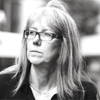This article is part of a series on social classes in Australia, which also includes pieces on the working class and the ruling class.
--------------------
Of all classes, the middle class is the one with the most people clamouring to be part of it. Many members of the ruling class prefer the label “middle” to one that makes capitalist dominance so overt. Many workers think that having a middle-income job by default puts them in the middle class. And people who want to downplay the working class’s revolutionary potential prefer to say, “We’re all middle class now”.
The middle class is often presented as an amalgam of various class positions lumped together. There is an element of truth in this. The middle class is heterogeneous even though it is a minority of society. But instead of starting from middle levels of income, or particular “middle-class” occupations, or how people self-identify, to best understand or define the middle class we need to look at its members in relation to production and to the capitalist class and the working class.
In the 1970s, Marxist sociologist Erik Olin Wright posed three questions to do this: Do they own or control the means of production? Do they control their own labour in any substantial sense? Do they control the labour of others? For the capitalist class, the answer to all three questions is yes, for the working class, no. For the various groups that make up the middle class, the answer is “it depends”.
Between capital and labour are three key groups composing the middle class. First is the “traditional middle class”: small business owners and self-employed sole traders, from cafe owners to small trades like plumbing businesses or hairdressers or doctors’ practices. In the countryside in much of the world, small farmers and peasants fit into this category. While they are disappearing in the advanced economies, this rural, agricultural middle class is still the biggest sub-section of the middle class worldwide.
Second, as capitalism has grown, what is often called “the new middle class” has developed. These are employees rather than small business owners, but distinguished from the working class by their role as managers of the labour of others.
The other significant group between capital and labour is intellectuals, who play an important ideological role for capitalism and have a substantial amount of control over their own labour: university professors and senior journalists, people running NGOs and so on.
The traditional middle class does not operate independently of capitalism, whatever the ideology of the virtues of being your own boss might say. Its members are integrated into capitalist production, either as suppliers of goods and services to big capital or because the goods and services they provide are more easily provided on a small scale or they fill a gap in the market that big capital has yet to take over.
They make their living primarily through their own labour with self-owned means of production. Successful shopkeepers or tradespeople may start to employ hired help, even if they keep working themselves. If this becomes their primary source of income, they have left the middle class—if only just—but they remain in a somewhat precarious economic position. In the other direction, they may leave the middle class for the working class if their business goes bust and they have to work for someone else.
American Marxist Hal Draper once summed the position of the traditional middle class like this:
“The petty-bourgeois [small capitalist] Janus faces two ways. On one side the petty-bourgeois confronts the capitalist, on the other side the worker. Two different lines of demarcation run through them: (1) If a line is drawn between property owners and the propertyless, then they are property owners; and as such they can rejoice in their identity with millionaires and thrill to orations on the Rights of Property.
“(2) If a line is drawn between those who live by their own labor and those who live by others’ labor, then the petty-bourgeois belongs with the former, and they are workers, and as such they can appreciate the grievances of the working classes ... The petty-bourgeois are therefore pulled in two directions.”
The balance of class forces, the state of the class struggle, determines the strength of the pull. In normal times, capitalism is so dominant that there is little question that the traditional middle class aligns more with the capitalist class. Most of the time, however, its members imagine themselves elevated above class antagonisms. In fact, they are squeezed from both directions. Draper again:
“From above, they are crowded out by the pressure of more efficient capitals and oppressed by the policies of a government interested in the expansion of big industry rather than the tribulations of the local tailor ... On the other hand, from below the petty-bourgeois enterprisers may be harassed by the ‘laziness’ of their apprentices, shop assistants or other hired help, who will not share their enthusiasm for self-sweating ... [and] the poor mini-capitalist is driven to supersweating in order to extract from the labor of employees that which is needed to balance the advantages of a bigger competitor.”
So they resent the big capitalists who outcompete them (as Coles and Woolworths do the corner shop) and the state that doesn’t care enough about them and their problems. For example, the Australian Chamber of Commerce and Industry, which mostly represents hundreds of thousands of middle-class business owners, complains: “The Australian workplace health and safety regulatory environment is complex and not appropriately scaled for the reality of our small businesses”.
It is not only workplace safety requirements that cause them grief. The need to compete on an uneven playing field is also why other dodgy practices such as wage theft, forcing their kids to work in the family business, cash in hand payments and avoiding taxes are so identified with small businesses.
Then there is the “new middle class” of middle managers and highly paid professionals. It is important to distinguish this group from the proliferation of “managers” in contemporary capitalism, like a shift manager at McDonalds who may get a few extra dollars an hour but is just another worker. The new middle class is an array of senior supervisors, professionals and middle managers working in big private and public sector bureaucracies. Specialised professionals such as engineers, lawyers or accountants in such bureaucracies may have considerable autonomy in their work. Others, such as deans of university faculties or executive managers in big corporations, have power over large numbers of workers.
The growth of this new middle class is a product of the concentration and centralisation of capital. As long as the scale of production and the size of businesses were comparatively small, it was possible for capitalists to perform the work of surveillance and control themselves, with some assistance from the small numbers of clerks and foremen they employed.
Once businesses become bigger, more and more delegation and layers of authority and management are needed to supervise the labour process and administer the highly complex economy of advanced capitalism. The ruling class needs to be able to rely on these delegates to operate in a manner conducive to their interests, and therefore offers considerable financial rewards.
Members of the new middle class, while not controlling the means of production, have a measure of operational control delegated to them from above, thanks to their success as individuals in climbing up a bureaucratic career structure. This income and power over other employees make them a group separate from the working class.
At moments of social struggle, a powerful workers’ movement can sometimes draw some of these layers behind it. But career aspirations for promotion, and receiving far higher wages than ordinary workers around them, are powerful forces binding middle managers to the ruling class.
Like the traditional middle class, the new middle class can be highly individualistic. But this is a somewhat different kind of individualism. As Erik Olin Wright puts it: “The individualism of the old petty bourgeoisie stresses individual autonomy, be your own boss, control your own destiny, etc”, while people in the new middle class exhibit “a careerist individualism, an individualism geared towards organisational mobility”.
The third section of the middle class is intellectuals, such as professors or senior journalists, or the bureaucrats working in the community sector and other NGOs. They don’t own or control the means of production, but they are allowed quite a lot of independence and autonomy in their jobs, and they often feel like part of an elite with a responsibility for producing important and far-sighted ideas.
Their social role is to provide the ruling class with ideological cover. They operate in the realm of ideas, but they are not free agents. The interests of the ruling class are the decisive conditioning influences and set the boundaries of behaviour, place in the social structure and lines of activity leading to rewards for intellectuals. If their search for the truth counters the interests of the ruling class, they will rarely advance in their position.
They are locked into the system in various ways. For example, NGOs are mostly dependent on the state (or “liberal” capitalists) for funding and are therefore beholden to a moderate political outlook. An example is the overhauling of the Safe Schools program, a government-funded intervention aimed at making schools more inclusive for LGBTI students. In the face of homophobic and transphobic attacks from the right-wing media, the contract of Marxist co-founder of the program Roz Ward was terminated and the content of the program watered down.
So, the middle class is a collection of heterogeneous social layers who have in common only an ambiguous and intermediate position with respect to the fundamental contradiction between capital and wage labour. The October 2021 release of the Australian Bureau of Statistics’ “Jobs in Australia” data gives some idea of composition of the middle class. While 90 percent of the Australian workforce is categorised as “employees”, this is more than the working class. In addition to the 10 percent who are owner/managers (some of whom will be members of the capitalist class, not the middle class), other categories that include the middle class are managers (11 percent, and entirely middle class) as well as professionals (19 percent, some of whom will be working class, like teachers) and clerical and administrative workers (11 percent, most of whom will be working class); i.e. the middle class is clearly a minority of the workforce.
Members of the middle class are economically dependent and politically atomised. They do not have the same power as the capitalists, who own or control the means of production, nor the power of the working class to advance their interests by collective action. No section of the middle class can constitute an independent force in society in the way that the capitalist class or the working class can.









